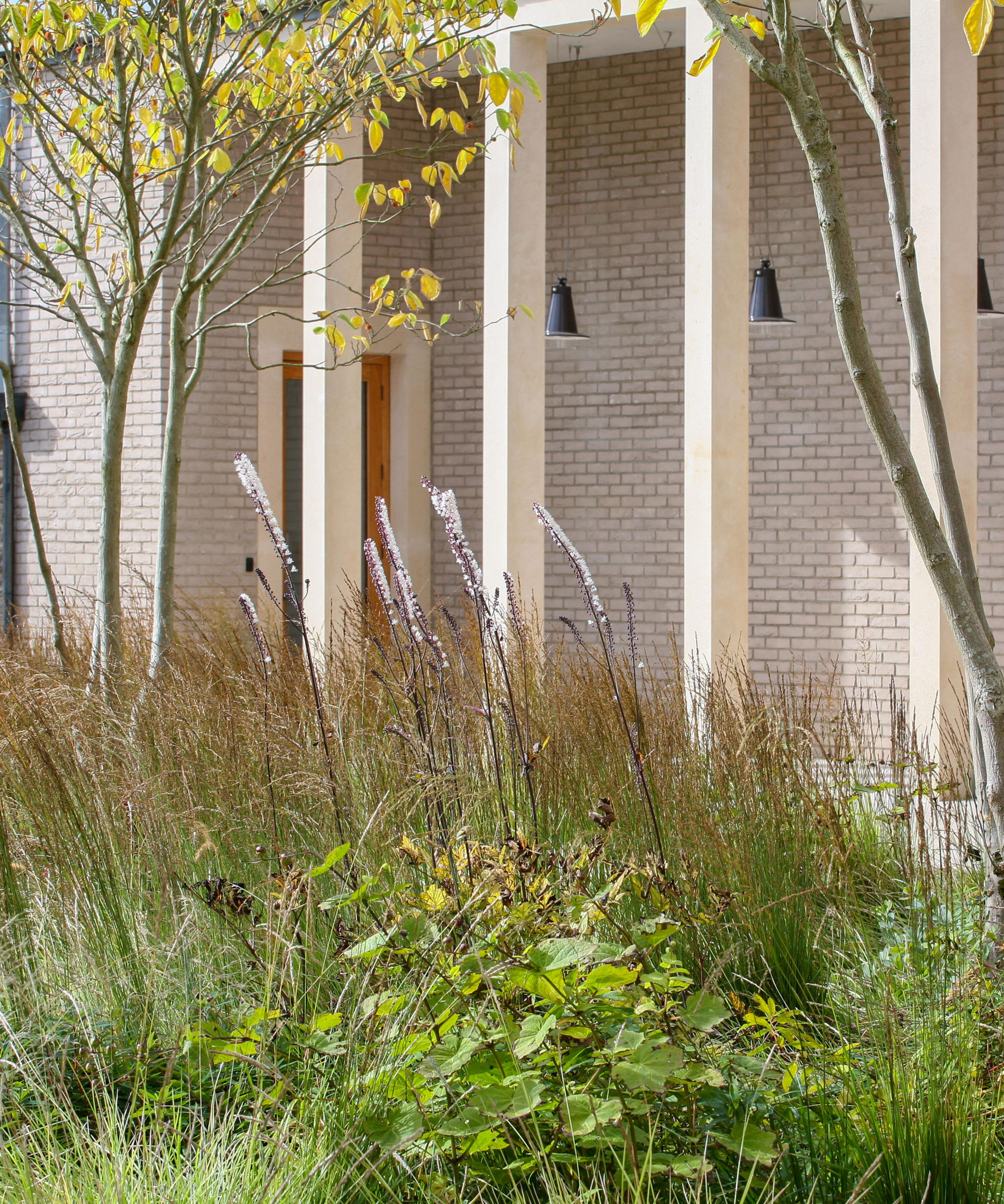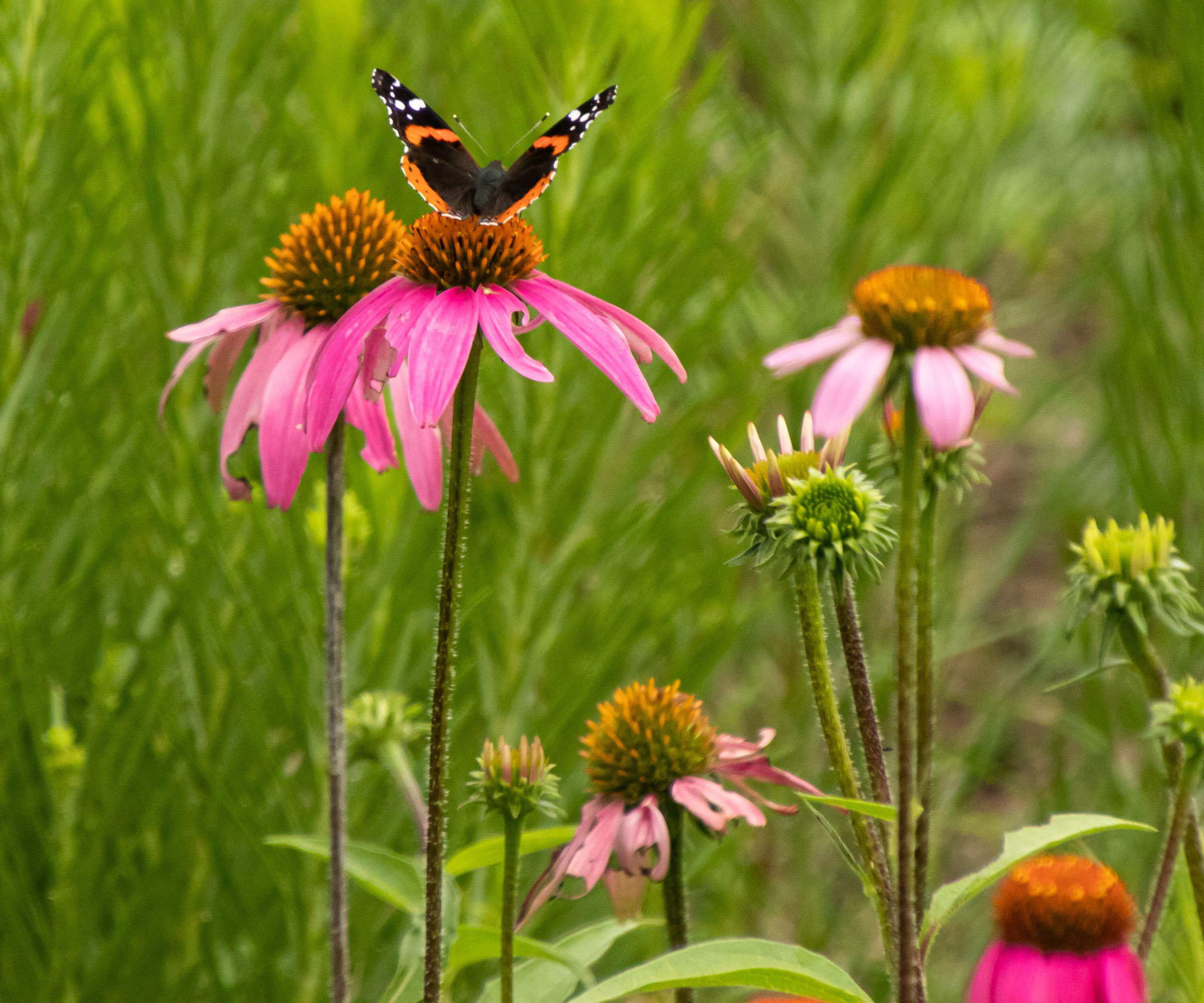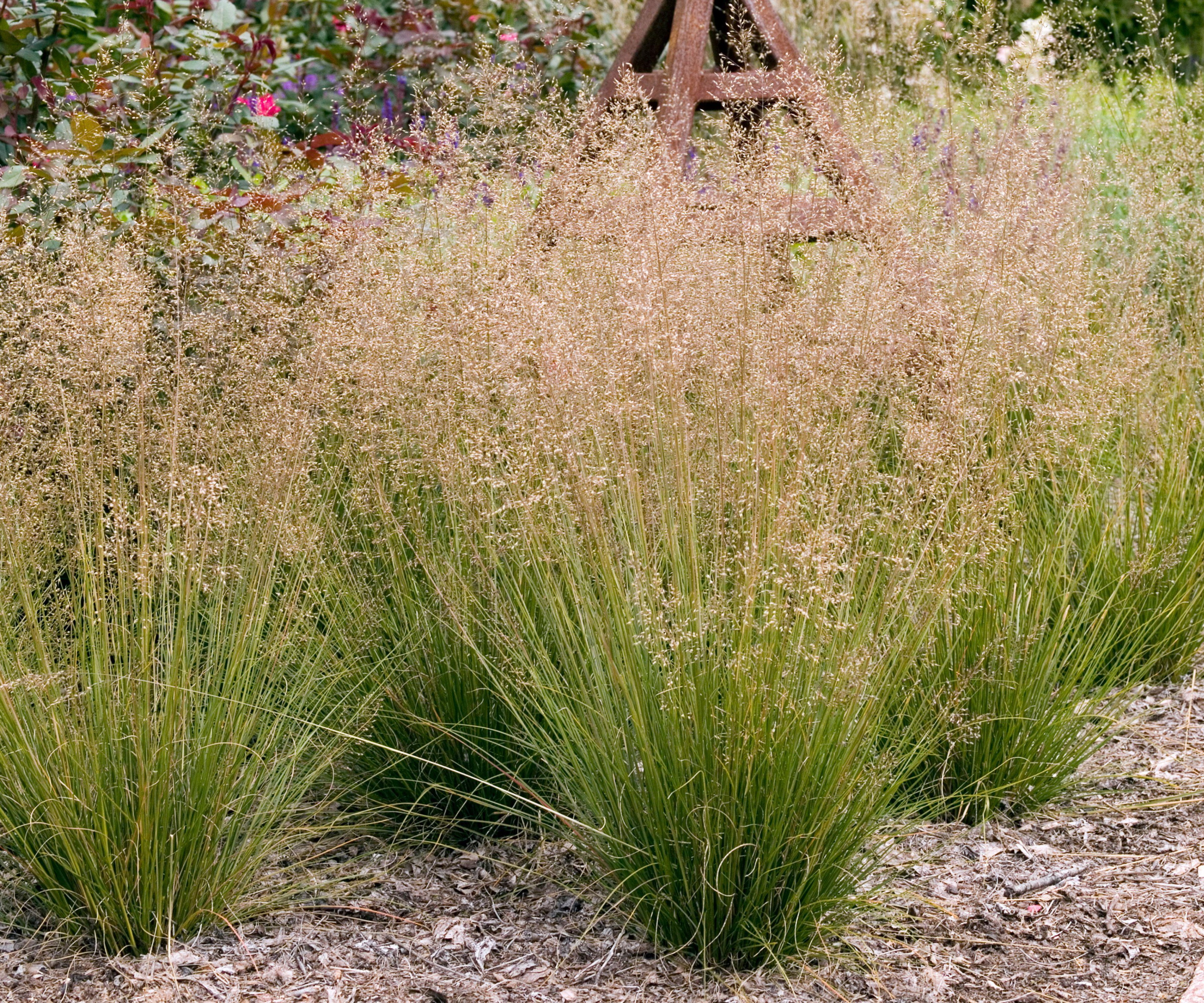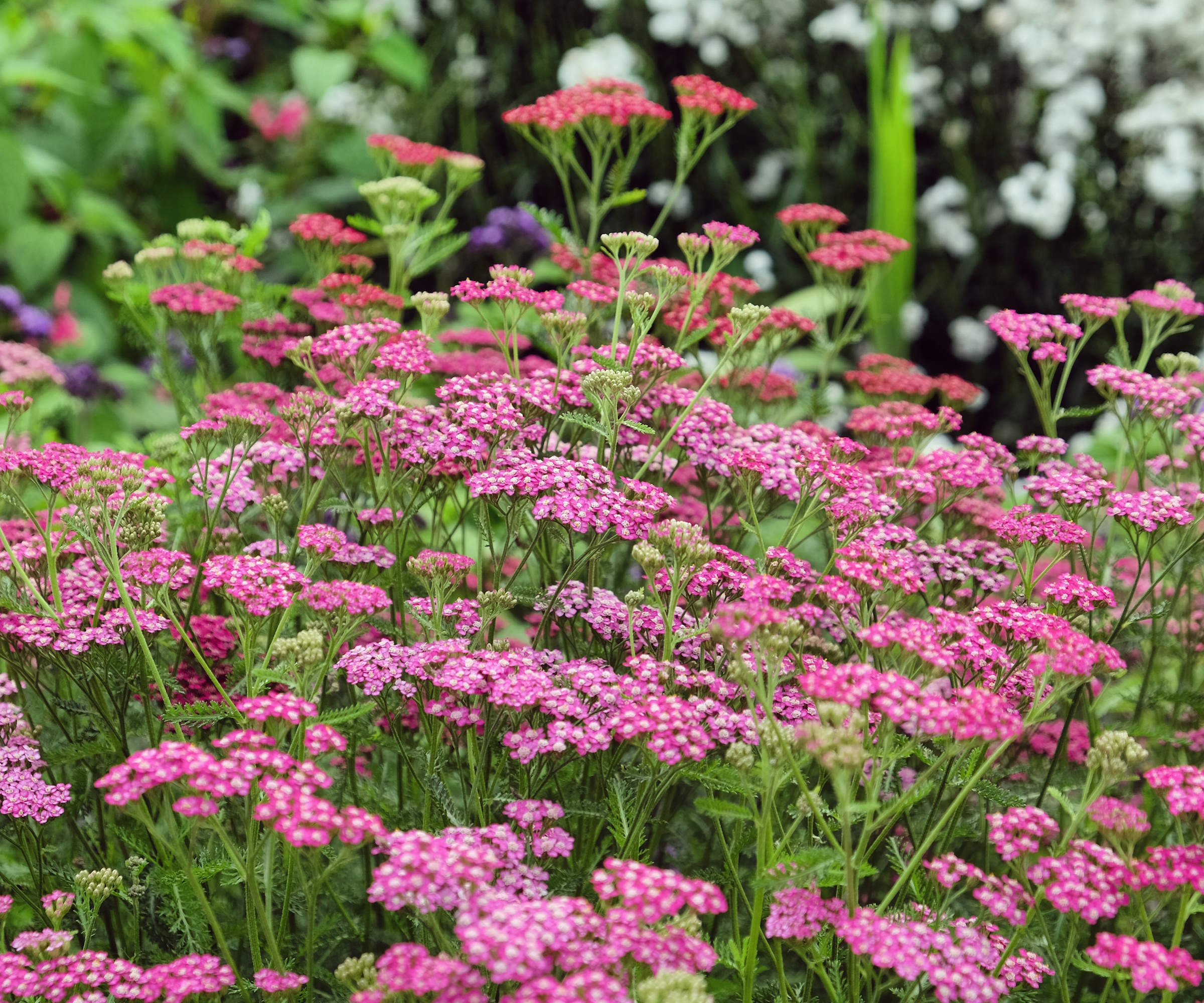What is Prairie Minimalism?
Prairie planting has gained popularity for its relaxed, informal, and romantic style, which seeks to replicate the American prairies of the Midwest. This approach uses native species and minimal human input, making it an appealing choice for gardeners interested in sustainable gardening methods. While most effective on a larger scale, prairie planting can also be adapted to smaller spaces in a more modern and minimalist way.
Prairie minimalism takes this concept and adds a contemporary twist, allowing gardeners to incorporate the essence of prairie planting into their backyard with clean lines and a modern aesthetic. Instead of overwhelming the space with a wide variety of plants, this style focuses on restraint, using a limited number of species and a constrained color palette to create a simplified pattern that still captures the beauty of the prairie.

A Sustainable Approach
Prairie planting and prairie minimalism offer more than just visual appeal—they provide significant environmental benefits. Native plant species used in these gardens are drought-tolerant and require less irrigation once established, making them a sustainable alternative to traditional lawns or borders. The deep root systems of prairie plants help prevent soil erosion by stabilizing the ground, which is especially important in areas prone to heavy rainfall or wind.
Additionally, the use of native plants reduces the need for fertilizers and other chemicals, as they are well-suited to local conditions. This not only saves time and money but also supports a healthier ecosystem. The diversity of plants in a prairie garden attracts wildlife such as birds, pollinators, and beneficial insects. Perennial flowers, or forbs, provide nectar for bees and butterflies, while seed heads and plant stems serve as food and shelter for birds and insects during the winter months.
For time-poor gardeners, prairie minimalism offers a low-maintenance option. Once established, these gardens require less watering, feeding, weeding, and deadheading, freeing up time to enjoy the garden and experience its therapeutic benefits.

How to Achieve a Prairie Minimalism Style in Your Yard
The key to achieving a modern minimalist prairie garden is restraint. Unlike the diverse mix of plants found in a natural prairie, a minimalist design focuses on simplicity and structure. According to Benjamin Vogt, author and specialist in natural landscape design, “Far less species diversity” is the hallmark of prairie minimalism. Instead of dozens of species in a square meter, a minimalist approach might feature one grass species or just a few.
To achieve clean lines and a structured look, Vogt suggests using a single unifying grass species as a base, paired with 1-3 forb species that bloom at the same time. These forbs can have architectural or topiary-like shapes, such as Baptisia minor and Smyphyotrichum oblongifolium.
Baptisia minor, commonly known as dwarf false indigo, is a herbaceous perennial native to the North American Prairies. It has an upright habit and produces white flower buds that develop into lilac-indigo blooms, attracting pollinators. If not deadheaded, black seed pods appear in the winter, extending its visual appeal. It thrives in zones 3 to 8 and can be purchased from Amazon.

Plants for the Prairie Minimalism Look
Prairie planting typically includes a mix of grasses and flowering perennials, with the ratio depending on the desired effect. A natural prairie may consist of roughly 75% grasses and 25% flowers, but a small modern prairie garden may lean toward a more balanced ratio of half and half.
Native perennials commonly used in prairie designs include:
- Black-eyed Susan (*Rudbeckia hirta 'Indian Summer') – Produces golden-yellow petals surrounding a deep brown center and blooms from July through fall. It is heat-tolerant and suitable for zones 5 and above.
- Purple Coneflower (Echinacea purpurea) – Features purple petals that droop from a brown cone, attracting butterflies and hummingbirds. It is easy to care for and thrives in zones 3 to 8.
- Common Yarrow (Achillea millefolium) – Pollinator-friendly and known to attract bees, butterflies, and hoverflies. It is well-suited for zones 4 and above.
For grasses, Bluestem (Schizachyrium scoparium), Switchgrass (Panicum virgatum), and Dropseed (Sporobolus) are popular choices due to their colors, textures, and ability to form a dense matrix.

Tips for Small Spaces
Neil Diboll, author and President of Prairie Nursery in Westfield, Wisconsin, recommends using short grasses like Prairie Dropseed (Sporobolus heterolepis) and Little Bluestem (Schizachyrium scoparium) in monocultures. These grasses can be blended with wildflowers for a structured yet natural look.
Diboll also suggests using tall plants in small spaces, particularly in "native border gardens" against walls. He emphasizes the importance of focusing on specific foliage and flower color combinations to maximize interest in compact areas. For example, a few individual plants such as Eupatoriums, Silphiums, and Vernonias can make a strong statement in a backyard corner.
With climate change and rising temperatures, many gardeners are turning to prairie planting as a sustainable alternative to traditional lawns. By reducing lawn size and creating a meadowscape, gardeners can enjoy a low-maintenance, wildlife-friendly space that requires less water and mowing.